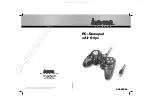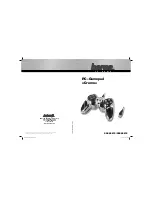
CHAPTER 3: INSTALLATION
WIRING
M60 MOTOR PROTECTION SYSTEM – INSTRUCTION MANUAL
3-25
3
4.
Applying the following equation to our example:
R = 84 V / 3*(1 / 2 mA) = 14 k
Ω
PR = 1.57 Watts
Eq. 3-4
5.
Calculating the voltage across the contact input with the Burden Resistor, Voltage across the contact Input:
Vresistor = 2 mA * 14 Kohm = 28 V
Vresistor < contact input threshold (84 V)
Eq. 3-5
In conclusion, in this example, the contact input does NOT operate falsely with the Burden Resistor across its input AND
when a battery ground is present.
3.3.6.3 Use of contact inputs with auto-burnishing
The contact inputs sense a change of the state of the external device contact based on the measured current. When
external devices are located in a harsh industrial environment (either outdoor or indoor), their contacts can be exposed to
various types of contamination. Normally, there is a thin film of insulating sulfidation, oxidation, or contaminates on the
surface of the contacts, sometimes making it difficult or impossible to detect a change of the state. This film must be
removed to establish circuit continuity — an impulse of higher than normal current can accomplish this.
The contact inputs with auto-burnish create a high current impulse when the threshold is reached to burn off this oxidation
layer as a maintenance to the contacts. Afterwards the contact input current is reduced to a steady-state current. The
impulse has a five-second delay after a contact input changes state.
Figure 3-22: Current through contact inputs with auto-burnishing
Regular contact inputs limit current to less than 3 mA to reduce station battery burden. In contrast, contact inputs with
auto-burnishing allow currents up to 50 to 70 mA at the first instance when the change of state was sensed. Then, within
25 to 50 ms, this current is slowly reduced to 3 mA as indicated. The 50 to 70 mA peak current burns any film on the
contacts, allowing for proper sensing of state changes. If the external device contact is bouncing, the auto-burnishing
starts when external device contact bouncing is over.
Another important difference between the auto-burnishing input module and the regular input modules is that only two
contact inputs have common ground, as opposed to four contact inputs sharing one common ground (see the Contact
Input and Output Module Wiring diagrams). This is beneficial when connecting contact inputs to separate voltage sources.
Consequently, the threshold voltage setting is also defined per group of two contact inputs.
The auto-burnish feature can be disabled or enabled using the DIP switches found on each daughter card. There is a DIP
switch for each contact, for a total of 16 inputs.
Summary of Contents for M60
Page 9: ...TABLE OF CONTENTS M60 MOTOR PROTECTION SYSTEM INSTRUCTION MANUAL ix INDEX ...
Page 10: ...x M60 MOTOR PROTECTION SYSTEM INSTRUCTION MANUAL TABLE OF CONTENTS ...
Page 552: ...5 344 M60 MOTOR PROTECTION SYSTEM INSTRUCTION MANUAL TESTING CHAPTER 5 SETTINGS 5 ...
Page 660: ...iv M60 MOTOR PROTECTION SYSTEM INSTRUCTION MANUAL ABBREVIATIONS ...
















































